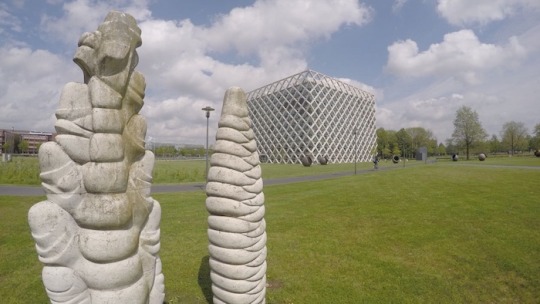
I spent a few days on campus of Wageningen UR and Utrecht meeting senior staff from two of the most prestigious agricultural and animal science universities in the world. Following chapters in this essay detail my experiences in meeting with different groups of the Golden Triangle.
Wageningen UR: ‘To explore the potential of nature to improve the quality of life’ – That is the mission of Wageningen UR (University & Research centre). A staff of 6,500 and 10,000 students from over 100 countries work everywhere around the world in the domain of healthy food and living environment for governments and the business community-at-large.
The strength of Wageningen UR lies in its ability to join the forces of specialized research institutes and Wageningen University. It also lies in the combined efforts of the various fields of natural and social sciences. This union of expertise leads to scientific breakthroughs that can quickly be put into practice and be incorporated into education. This is the Wageningen Approach.
meet: BASTIAAN MEERBURG – Head of Department Livestock and Environment at Wageningen UR
The last of my 6 meetings at Wageningen UR, Dr. Bastiaan Meerburg and I became fast confidants sharing spectacular conversations and excitement to further collaboration. We covered ecology, environment, human health, genetic engineering, and importance to this hard work for sake of our kids… Set in just day two of program travel, the enthusiasm and energy I came away with after spending a few hours learning and corroborating with this true expert set the tone for the rest of the my fellowship travels.
Bastiaan explained for me the true value of animal welfare. How the refined concept of OneHealth is so equally concise and genius. He detailed for me his work, and too that of the Wageningen as part of the Golden Triangle (public, private and university conjoined effort detailed in the next chapter below). Research in husbandry practice and monitoring those results to afford a healthy system was his specialty. How public awareness of zoonoses (people getting sick from animals) throughout the Netherlands went from zero-to-sixty back in the mid 2000s due to the potential of an antibiotic apocalypse brewing in Dutch hospitals from the unknowing hands of Dutch pig and Chicken farmers. Running rampant in a highly condensed society – the only solution that proved effective was preemptive eradication of food production practices that utilized slow administration of antibiotics similar to current practice on US domestic CAFOs. As global population demand for food animal products skyrocket – Bastiaan was clear in his thinking, this is not just a Dutch problem, but a global one.

I learned from Dr. Meerburg that the Dutch approach to animal husbandry varied greatly before the outbreak of resistance. With large ruminants, specifically dairy cows, the Dutch approach has always been aligned with pastoral or grazing on grass-lands. A deep connection to their heritage, much of the Dutch dairy industry was very progressive with animal welfare – as the value of clean and healthy milk products from grass-fed cows was equally the desired product of Dutch & German audiences, but a global market competitive advantage. Other areas needed greater focus and effort. Meat product from fowl and swine became the driver for change. Pigs, omnivores that are uniquely connected to the genetics of humans, needed immediate attention as many of the antibiotics used in raising swine were some of the same essential medicines used broadly for human healthcare. Others, not even essential for human treatment, proved to instigate further resistance.
From the meat we eat, the manure we spread into fields and into water system, or even on the hands of that farmer’s young daughter who had no knowledge she was a carrier to contaminate a hospital – superbugs curated by farming are a reality and need immediate attention in the US and around the world.
Dr, Meerburg has contributed original content: “Behind the Horizon” will be profiled in forthcoming SoiltoTable mailing.
